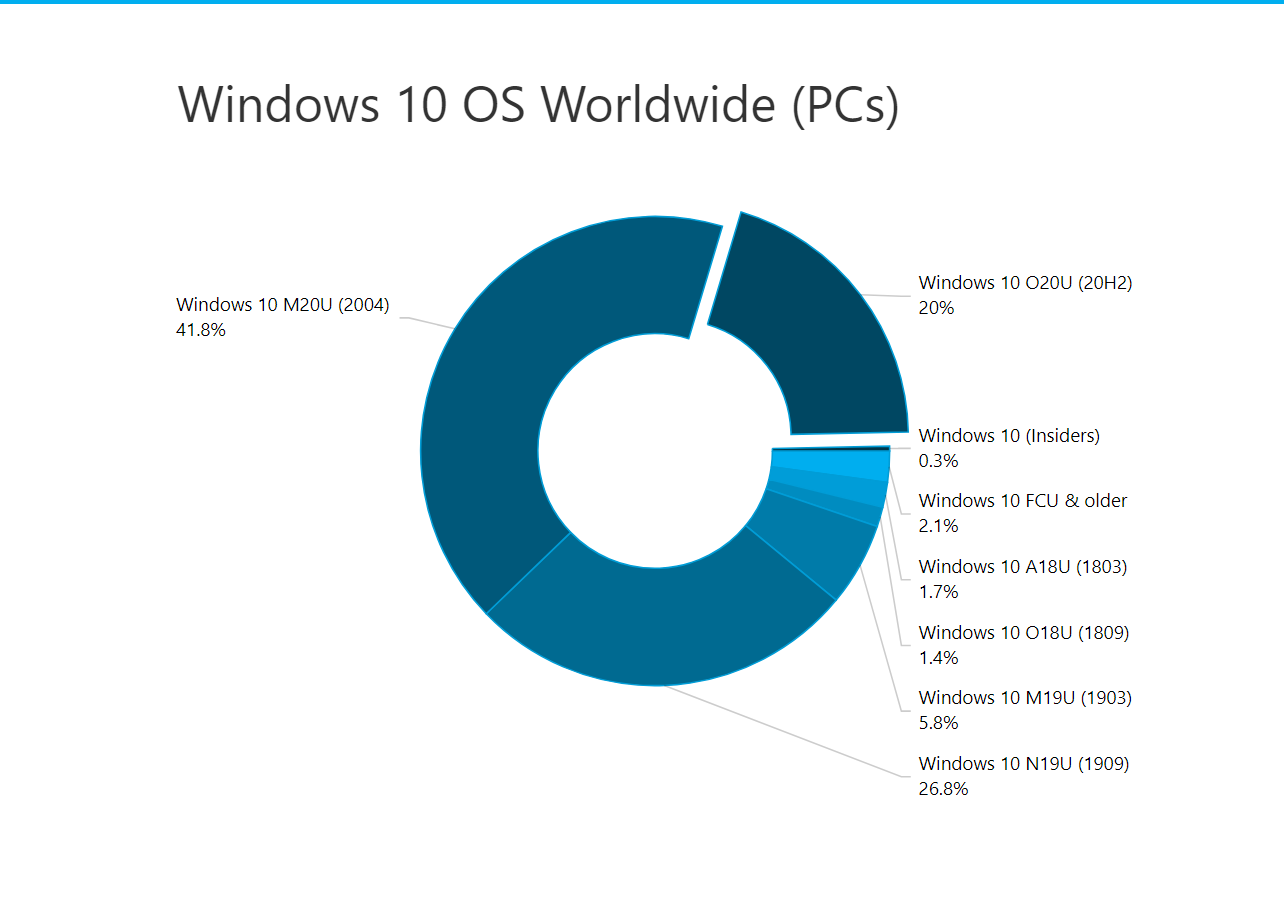It’s factual to say that Windows is the single most widely used operating system in the world, so anytime a newer or updated version of the OS ends up being released adoption rates are obviously going to be quite high. One thing that people often pay attention to has to do with those users that prefer older versions operating systems because of the fact that this is the sort of thing that could potentially end up impacting future updates that a company might be willing to invest time and money into.
With all of that having been said and now out of the way, it is important to note that the latest version of Windows 10 that is currently available in the market is the 20H2 version, and about 1 in every 5 Windows 10 PCs are currently using this version of the OS. The features update has proven popular, although over 40% of users still seem to prefer version 2004 which is the previous version. The version that came out prior to 2004, version 1909 to be exact, also has a higher adoption rate of about 26.9%.
This basically means that 20H2 still has a ways to go since plenty of users have yet to update to 2004. This won’t be much of a problem for Microsoft though since the tech giant is going to want any kind of adoption rate at all for its Windows 10 offerings, and the 20% adoption rate for 20H2 at the very least means that regular users of Windows 10 appear to like the new features that are being offered. It is presumed that an even higher adoption rate will arise as time goes by, since most users eventually do end up updating especially when older versions of the OS start to become obsolete.
H/T: Adduplex.
Read next: Engagement data on Instagram revealed brands are posting more Stories than ever but reach is dropping
With all of that having been said and now out of the way, it is important to note that the latest version of Windows 10 that is currently available in the market is the 20H2 version, and about 1 in every 5 Windows 10 PCs are currently using this version of the OS. The features update has proven popular, although over 40% of users still seem to prefer version 2004 which is the previous version. The version that came out prior to 2004, version 1909 to be exact, also has a higher adoption rate of about 26.9%.
This basically means that 20H2 still has a ways to go since plenty of users have yet to update to 2004. This won’t be much of a problem for Microsoft though since the tech giant is going to want any kind of adoption rate at all for its Windows 10 offerings, and the 20% adoption rate for 20H2 at the very least means that regular users of Windows 10 appear to like the new features that are being offered. It is presumed that an even higher adoption rate will arise as time goes by, since most users eventually do end up updating especially when older versions of the OS start to become obsolete.
H/T: Adduplex.
Read next: Engagement data on Instagram revealed brands are posting more Stories than ever but reach is dropping

